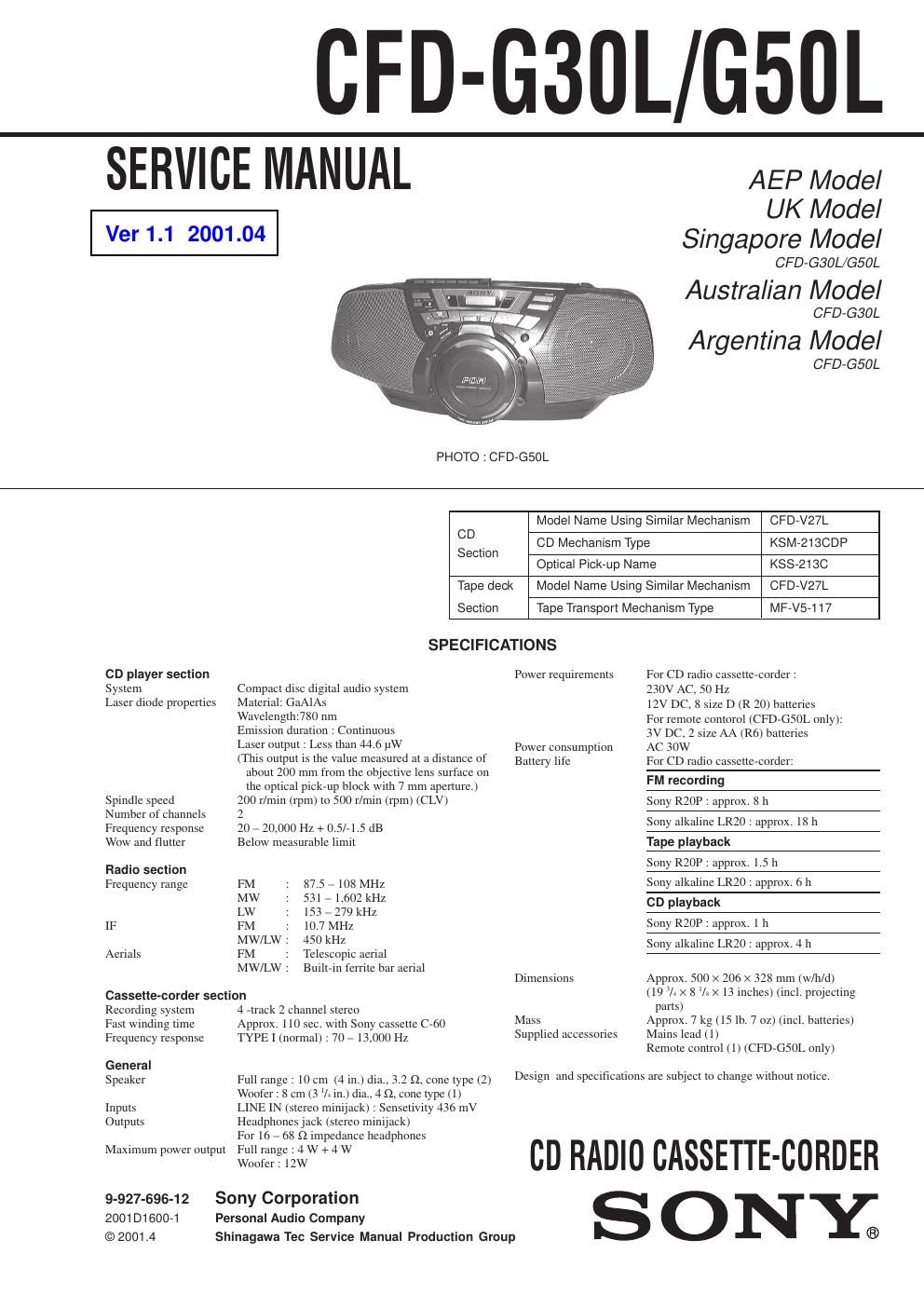Sony cfd g 30l g 50l cd radio cassette corder
This is the 46 pages manual for sony cfd g 30l g 50l cd radio cassette corder.
Read or download the pdf for free. If you want to contribute, please upload pdfs to audioservicemanuals.wetransfer.com.
Page: 1 / 46
